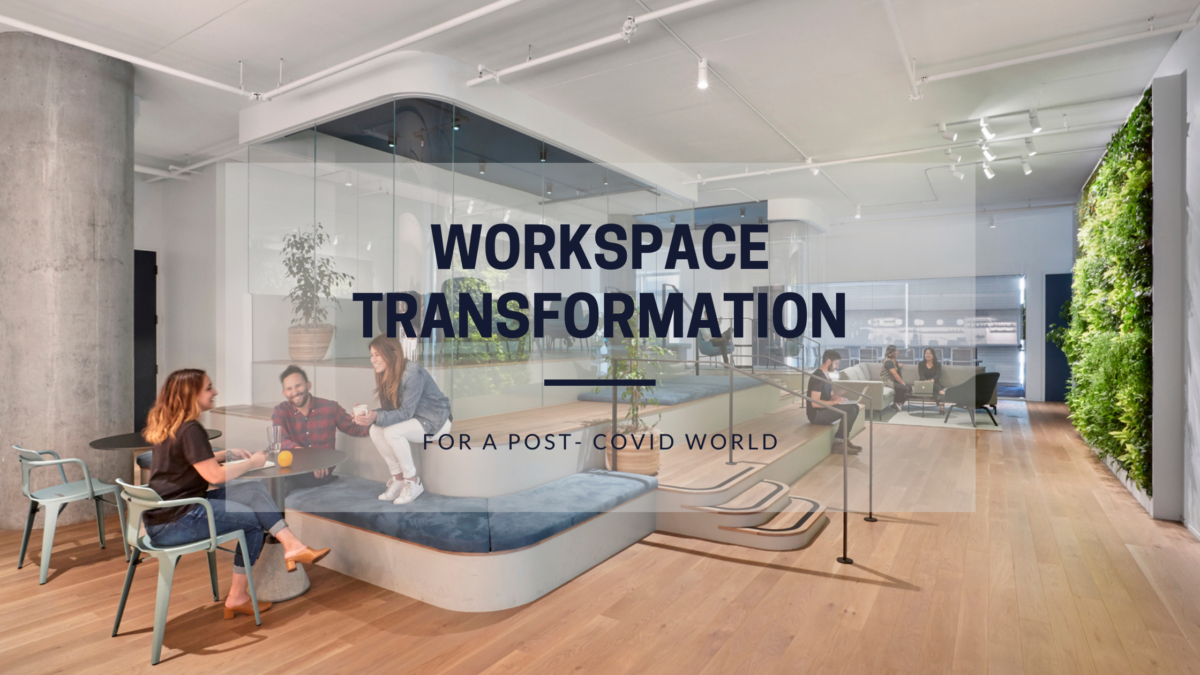Let’s begin with a flashback to the 1950s and check how the office has transformed last decades.
COVID-19 has accelerated a shift towards remote work. In the month and years ahead, experts say remote work will only become more prevalent.
With more people working remotely, companies may open regional hubs or provide access to co-working spaces wherever their workers are concentrated rather than have the majority of their workforce at one central office. Our challenge today is to leverage physical space so that we may regularly descend from our isolated summits. That means pursuing the rebirth of the office in a form that enhances its greatest asset: the ability to nurture all the meaningful relationships. The design features that make space effective resulted from a profound shift in mindset: think of the offices not as real estate but as a communication tool. Thus strategy, digital features, design elements, and value become more important than cost and efficiency. You’d choose the e-mail provider with the best collaboration and file-transfer features; you can think of space investments the same way.
Though many workers will split their time between home and office, employers will invite workers back to areas that are spread out but still spark interactions, similar to a coffee shop or co-working space. Meeting rooms will be outfitted with videoconferencing or VR meeting technology to accommodate workers who remain remote. However, the longer people worked from home, it became clearer that some, especially parents and apartment-dwellers, yearned to get back to the office as soon as possible. companies will still need to invest in areas for individual-focused work, such as building privacy booths or small offices that can be booked by the hour.
Activity-based working (ABW) is a catalyst for organizations to rethink the way they work aligned to their cultural and strategic objectives. It provides people with a choice of settings for a variety of workplace activities. Workplace flexibility goes beyond furniture arrangements. It could mean investing in the right technology to ensure onsite and remote colleagues can continue to work collaboratively, wherever they are. And finally, that also means finding the right balance of how much leaders expect workers to be onsite, and how much leeway they give with working from home.
 The infographic shows why flexible workspaces are crucial to boosting businesses (image source: https://figarigroup.com/blog/reasons-why-flexible-workspaces-boost-businesses-infographic/)
The infographic shows why flexible workspaces are crucial to boosting businesses (image source: https://figarigroup.com/blog/reasons-why-flexible-workspaces-boost-businesses-infographic/)
The 3 key focus areas of post-pandemic office transformation are:
1) Health and wellness
- Better ventilation systems for indoor spaces
- Buildings with ample natural lighting
- Access to the outdoors, such as private gardens or balconies
- A cafeteria that serves healthful food options
- Biophilic design- nature in the space
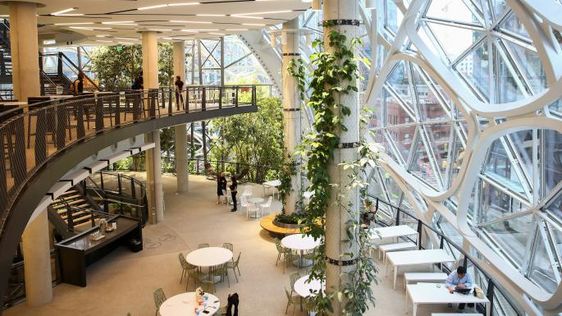 Bringing the outdoors inside. The Spheres are the centerpiece of the new Amazon headquarters. With ample natural lighting, good ventilation, a cafeteria & biophilic design.
Bringing the outdoors inside. The Spheres are the centerpiece of the new Amazon headquarters. With ample natural lighting, good ventilation, a cafeteria & biophilic design.
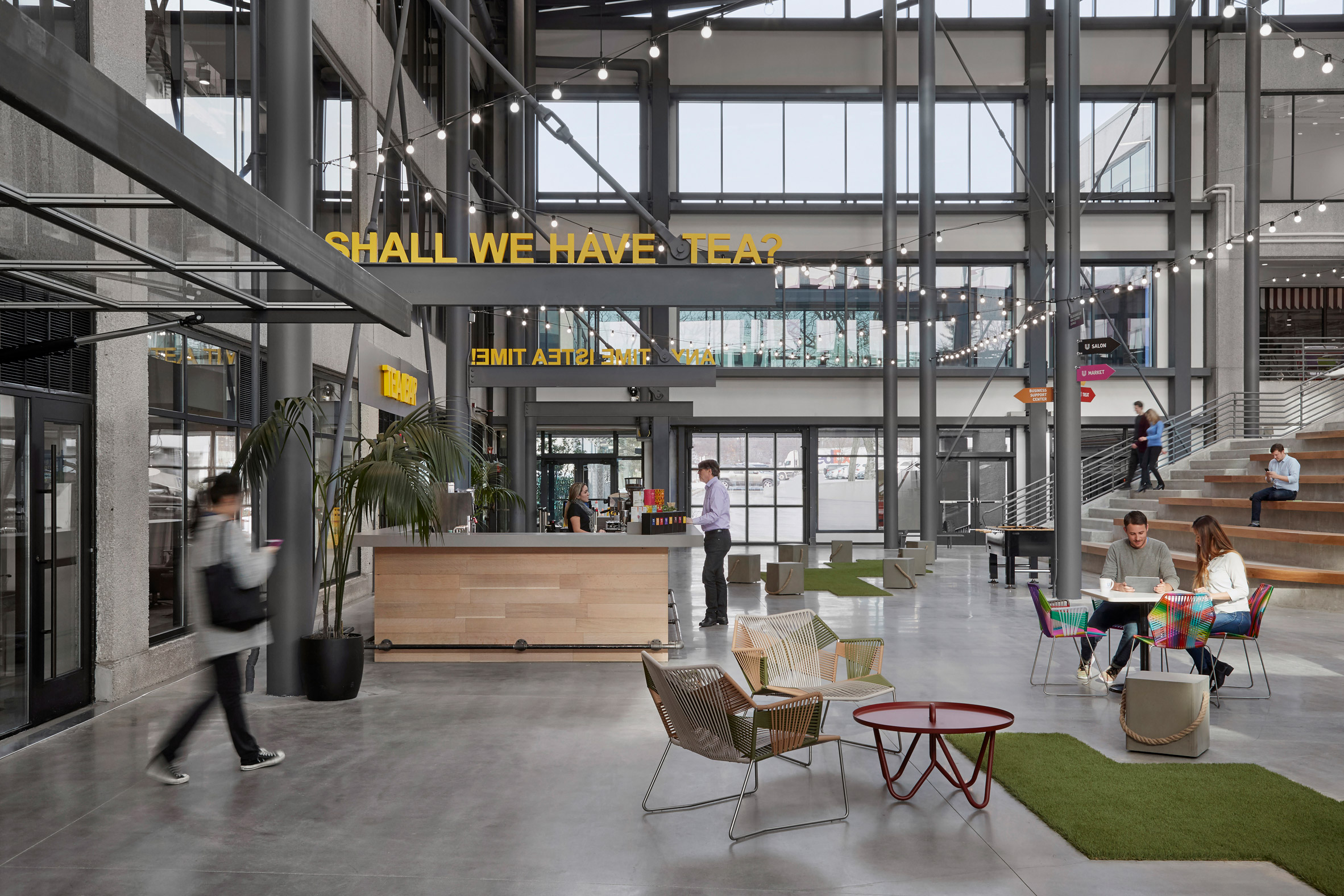
Unilever North America’s new headquarters design is not only modern, flexible, and conducive to employee health and well-being, but it also has fulfilled the ambitious sustainability goals.
2) Flexible working spaces that promote collaboration and creativity
- Hot desking with plug & play concept
- Private spaces for focused work
- Creating collision space for nurturing meaningful relationships
- Spaces that could easily be reconfigured for different tasks and evolving teams.
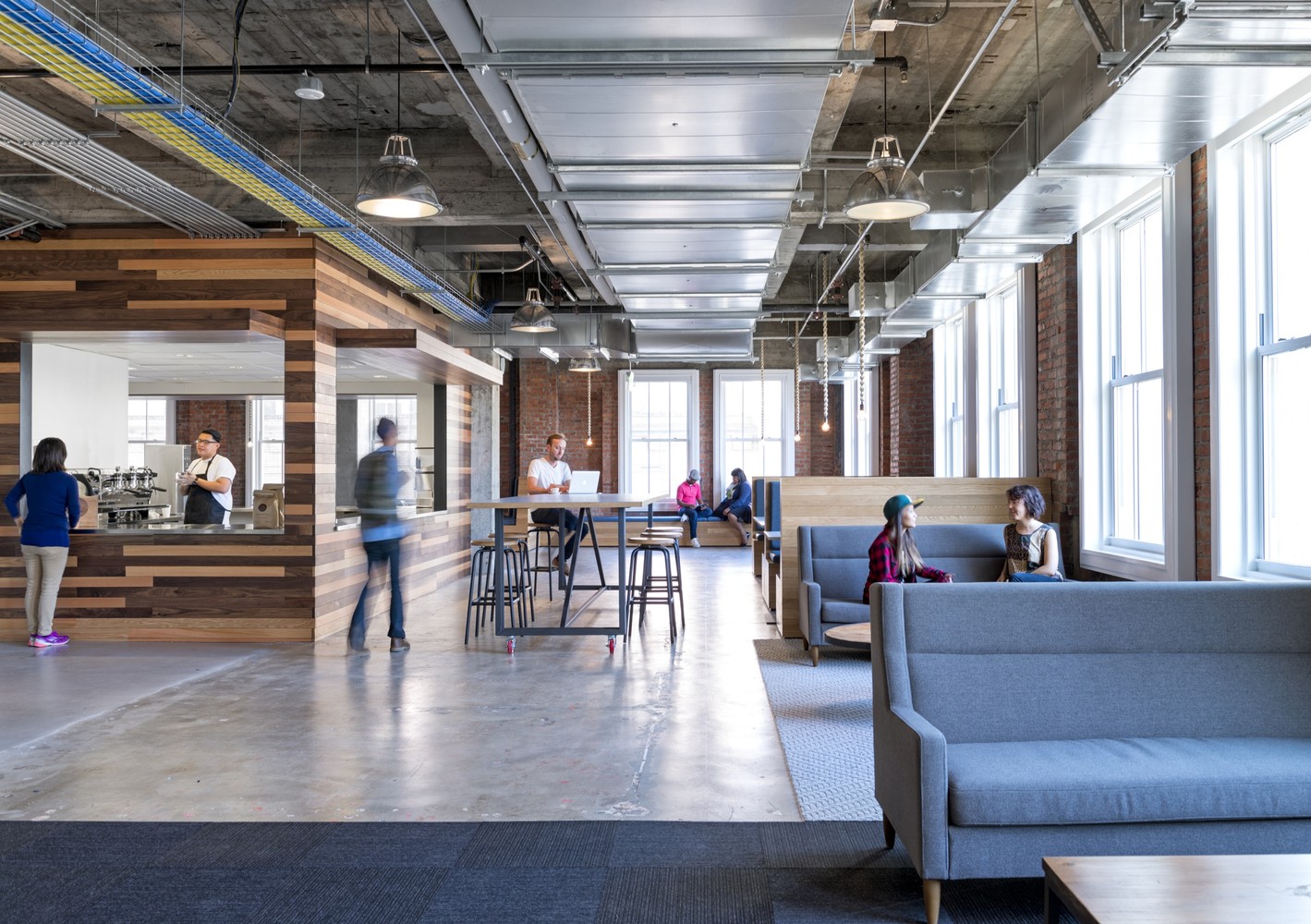
Yelp’s San Francisco headquarter is designed to facilitate group dynamics so that people interact with each other even though they work on different floors.
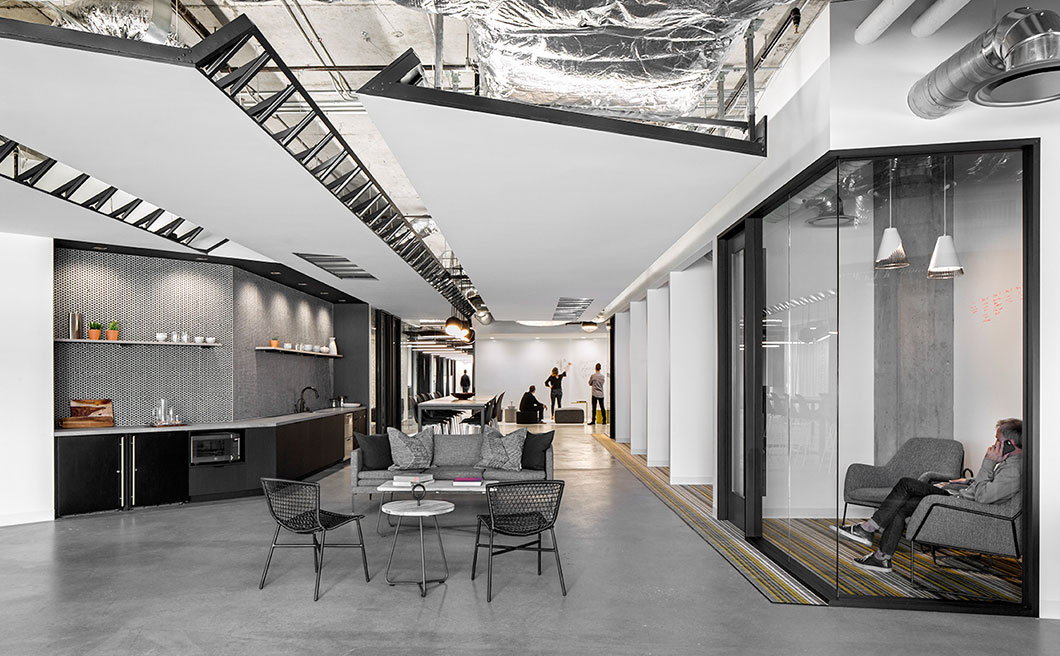
Aftershock sited at Los Angeles’ Silicon Beach, the office design reflects the studio’s dynamic personality and creative style, celebrating the collaborative nature of outstanding design
3) The office as a status symbol
Moving forward, employers will use their offices to show off their company culture like never before. Employers are increasingly using well-designed spaces as a recruiting tool, too: “If I’m looking for a job and go in to look at the space, I might think, ‘Wow, this company is thinking about how I interact with colleagues, how I can be most comfortable and how I can have a great experience in the office. That’s a club I want to be a part of.’”
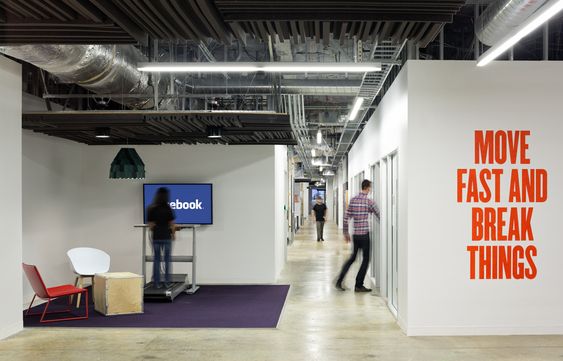
Facebook‘s Menlo Park headquarter design fits the company’s ideals of being social, mobile, culturally relevant, personally sustaining, and promoting self-expression.
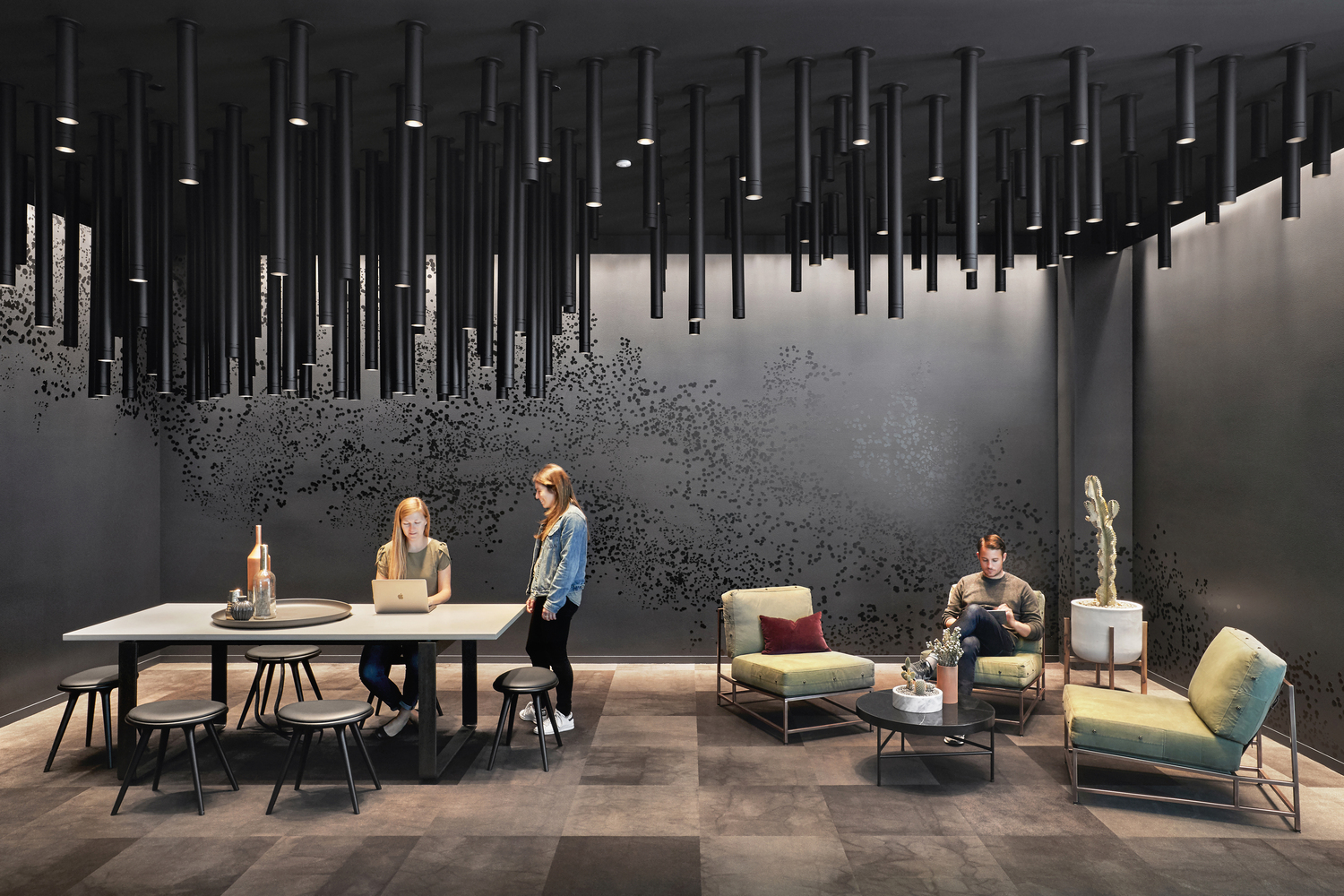
“Instagram able” corner of Slack’s headquarter at San Francisco
Conclusion
Companies must have an understanding of what they’re trying to achieve before changing a space. Spaces can be designed to favor exploration or engagement or energy to achieve certain outcomes- e.g. to improve communication, accelerate decision making, or to create “a winner mindset.”If companies take the moment and invest in research to understand where their employees have been more productive or satisfied and have found meaning in what they do. They can tailor-make these options moving forward to strengthen their business and culture. Instead of trying to pay attention to the trends, everyone else is doing, look for opportunities to make a custom solution and have more of an impact on your organization.

